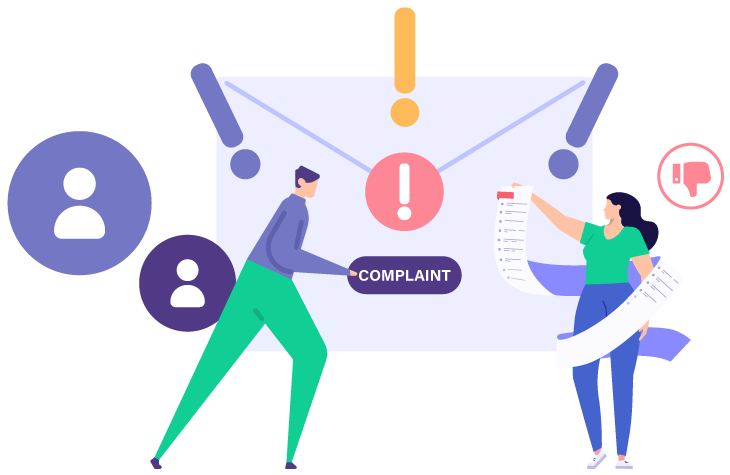SaaS Dunning Management: How To Recover Failed Payments
by Marta PoprotskaLet’s just come out and say it - customer churn is costly for SaaS enterprises! It impacts recurring revenue, and even worse, acquiring new customers comes at a very high cost, and SaaS online businesses depend on subscription renewals for their longevity and profitability. While the generally accepted churn rate is 5-6%, retaining as many existing customers as possible is ideal.
To help keep customer churn to a minimum, businesses need to fine-tune their processes and utilize the best tools on the market to ensure that the number of declined payments is as low as possible. If the subscription billing software you currently use cannot adequately respond to potential customer churn through dunning communication systems, you have a big problem. Let us further explain how this automated payment recovery mechanism can bolster your business and make the difference between success and failure.
What Is Dunning Management and Why Is It Important?
Dunning management is one of the payment collection processes every SaaS business needs to ensure that their shoppers pay on time. Rather than manually sending customers notifications about failed payments, innovative companies invest in dunning-management systems that automate the process.

For enterprises with a subscription business model, failed payments can lead to account cancellation or even termination – sometimes at the extreme churn rate of between 15-20%. A dunning-management system can prevent this by allowing you to proactively contact clients before losing their business.
The system enables you to send payment reminders, alert customers to transaction errors, automatically retry failed payments and assist them in taking corrective action before they even have a minute to think about going to a competitor.
Voluntary vs. Involuntary Churn
Voluntary churn occurs when customers actively decide to unsubscribe from your service. Their reasons could include a bad experience, your service or product no longer meets their needs, they don’t feel they are getting a good return on their investment, or they discover something better elsewhere.
Involuntary churn happens when a customer's subscription is canceled due to a failed payment. This could result from an expired credit card, insufficient funds, or some other payment issue they might not even be aware of.

Examples of Voluntary Churn
Customers that actively decide to unsubscribe from your product or service do so for several reasons. These include but are not limited to dissatisfaction due to unpleasant user experience, a lack of features they consider vital to their operations, poor customer support, product issues that aren't fixed timeously, and increased pricing.
When it comes to voluntary churn, customers ultimately leave because they don't feel they're getting value for money.
9 Ways to Preventing Voluntary Churn
Preventing voluntary churn and building customer loyalty requires a proactive approach that starts with understanding customer behavior. You must constantly monitor usage patterns, favored features, and customer engagement to identify at-risk clients and adapt your churn strategy accordingly. On the plus side, even if they unsubscribe, the good news is there are several steps you can take to get them back.
1. Dunning Emails
If you still have the option of communicating with customers once they've indicated they'd like to unsubscribe, reach out to reiterate the value of your product or service and the many benefits they deliver and see if you can gain any information as to why they have churned out.
Focus on your product's most popular features and how it may have worked for them in the past, and highlight new, innovative features that might push your brand ahead of your competitors. Offering promotional discounts on renewal may also help – don't forget to provide a direct subscription renewal link. Most importantly, see if you can address their concerns and find the solution to the problem that caused them to leave.

2. Product Promotions and Incentives
To encourage customers to remain subscribed to your SaaS, try providing incentives. This could be promo codes and product discounts for longer-term subscriptions. Another option would be to offer a payment pause instead of immediate cancellation, buying more time to win the customer over.
But ultimately, you might have to accept that it makes more financial sense for your business to let price-sensitive customers go, as they could drain resources in the long term.
3. Personal Follow-Up
Remember, there are some instances when a direct client call may be more effective in preventing churn than an automated email. This approach is particularly relevant for some B2B platforms where client relationship management is essential. Not only will it help you retain clients, but you'll develop an approachable brand image, too.
4. Collect and Act on Feedback
If you’re not already collecting feedback from your users throughout their customer journey, now is a good time to mention that it will help you continuously improve your product, helping you stay relevant and ahead of your competition.
Offboarding feedback can also help you understand why customers opt out of your service and how they feel about your brand before leaving. An in-app feedback tool will allow you to receive relevant, prompt inquiries and give you a chance to respond to them quickly.
Learn all 9 steps to prevent voluntary churn and what to consider when configuring your dunning management on PayPro Global's Blog.

